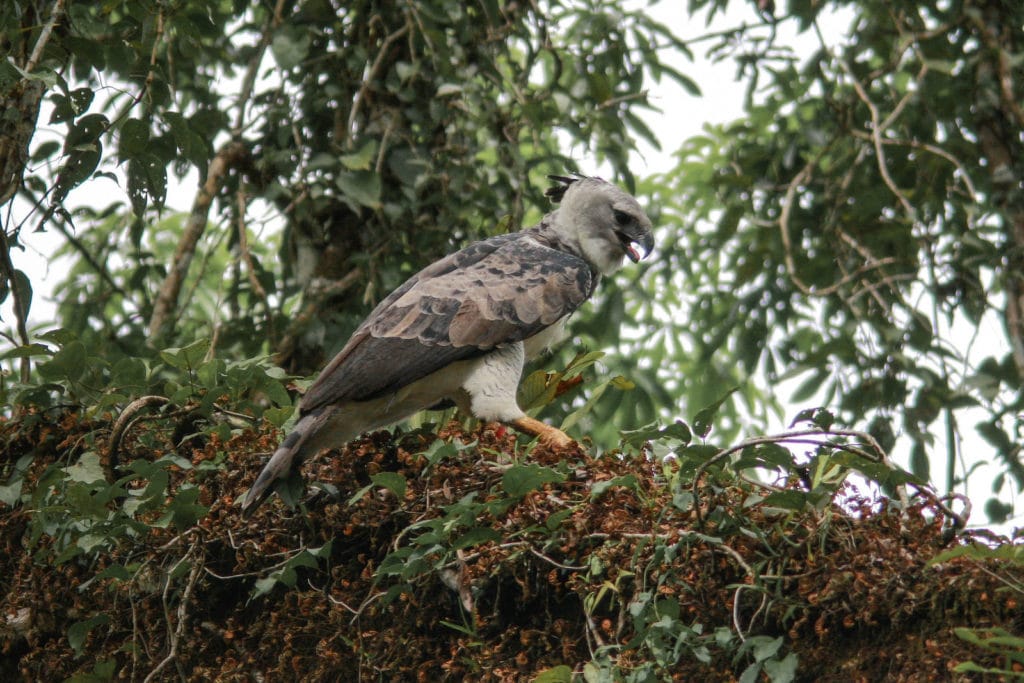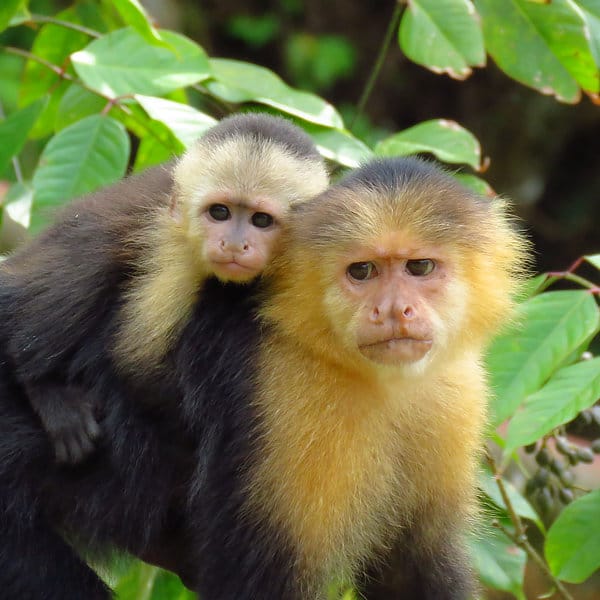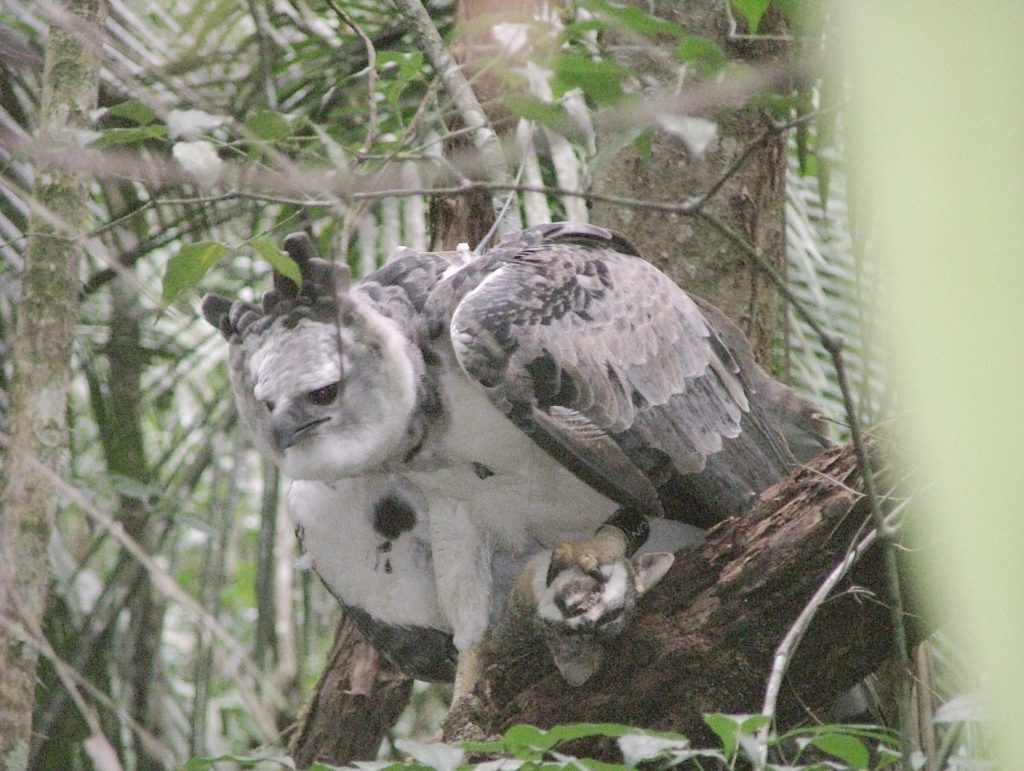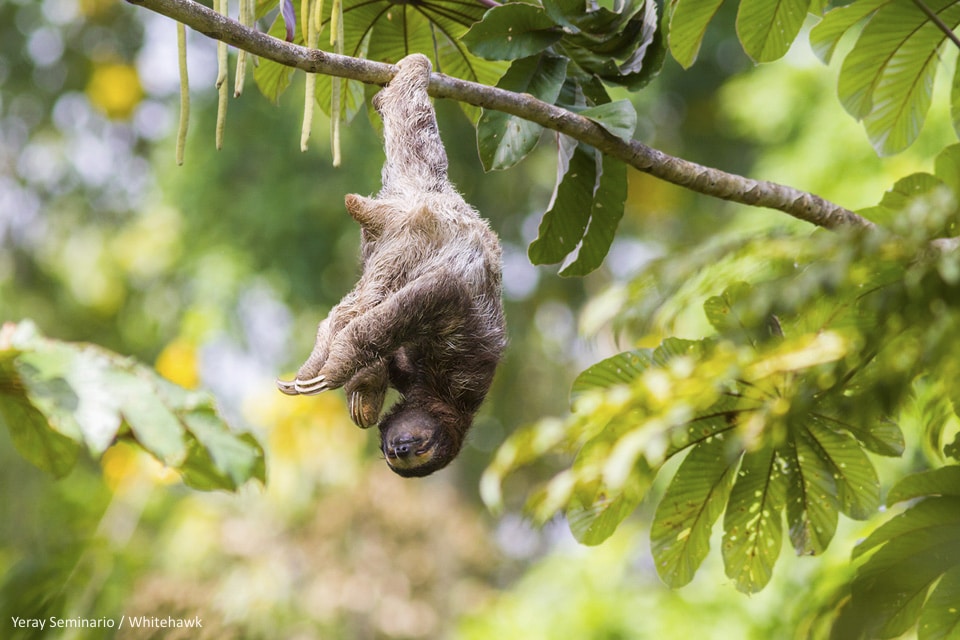It seems reasonable to assume that a bird measuring 3 feet tall from beak to tail, and has a 6-foot wingspan, legs the size of a human’s wrist, and talons the size of grizzly bear claws eats just about anything it wants to. And that is true, within reason, of course. Biologists throughout the Harpy Eagle’s range have been studying this species for years to try to understand more about its biology, breeding behavior, habitat, and dietary needs.
Harpy Eagles are apex predators in rainforests from southern Mexico to northern Argentina. They are hunters of land, and sky, and trees. They are strict carnivores and prey mostly on arboreal mammals, such as monkeys, sloths, coatimundis, porcupines, and opossums. Amazingly, Harpy Eagles have been documented eating over 100 different prey species throughout their extensive range. As in other raptors, females Harpy Eagles are significantly larger than males, which allows them to take larger prey.
The Peregrine Fund, a non-profit organization that protects birds of prey worldwide, is carrying out one of the longest studies on Harpy Eagles. This study has been on-going for the past 21 years and takes place in Panama’s Darien Province. Currently, biologists are monitoring around 43 nests in the area. Part of their efforts include learning as much as possible about what a Harpy Eagle eats.

How to discover what Harpy Eagles eat
Finding out what Harpy Eagles eat in a particular ecosystem can be quite challenging. There are three main ways researchers find out what Harpy Eagles are eating. The first is to observe a predation event. This can mean observing an actual kill, discovering an eagle feeding on prey (or bringing prey to a nest) that is still intact enough to be identified from a distance, or collecting prey remains, such as feathers and bones, either from below a nest or from directly inside it. While this might not seem too complicated, what makes it tricky is finding Harpy Eagle nests in the first place.
Thankfully, at least in Panama, many local people are involved in this project. Part of their job is to search for active Harpy Eagle nests in the region.

Harpy Eagle Diet in Central America
Central America, and especially Panama, is highly biodiverse. Its abundant forested environments provide homes for hundreds of species of mammals, reptiles, birds, and other animals, many of which make suitable meals for a Harpy Eagle. Members of the Whitehawk Birding team worked on the Harpy Eagle project in Panama, from 2002 to 2009. We tracked captive-bred and released eagles in Soberania National Park in central Panama and observed them feeding primarily on large arboreal mammals. When hunting in the rainforest canopy, Harpy Eagles will catch and kill Brown-throated Three-toed and Hoffmann’s Two-toed sloths, Mantled Howlers, White-faced Capuchin Monkeys, Northern Tamanduas, Rothschild’s Porcupine, White-nosed Coatis, and Green Iguanas. They will also target ground-dwelling animals such as Central American Agoutis, young peccaries, and even baby deer!
Harpy Eagles are skilled predators, and in addition to mammals and reptiles, they can even catch other birds. Biologists have documented Harpy Eagles feeding on toucans and parrots. To our surprise, we came upon a Harpy Eagle feeding on a Black Vulture!
Our team also spent a lot of time tracking Harpy Eagles in Belize, where sloths (their main diet in Panama and South America) are absent. In Belize, we documented Harpy Eagles feeding on Central American Spider Monkeys, Mexican Hairy Dwarf Porcupines, and Gray Foxes a number of times.

Harpy Eagles in South America
A three-year study of five breeding pairs in Brazil revealed that two species of sloth, Brown-throated Three-toed Sloth and Linnaeus’s Two-toed Sloth made up the bulk of the Harpy Eagle’s diet both in the number of individuals taken and in biomass.
A recent study from Suriname added nine new documented prey species for the Harpy Eagle. Some interesting ones include the Yellow-footed Tortoise, Lowland Paca, and Gray-winged Trumpeter.

Fun Facts about Harpy Eagles
Harpy Eagles are truly amazing birds! Did you know that:
- Harpy Eagles catch and kill their prey with their incredibly strong feet, which are well-equipped with sharp talons. A Harpy Eagle’s talon is the size of a grizzly bear claw!
- Despite having a 2-meter wingspan, Harpy Eagles can maneuver through the rainforest canopy with ease
- Harpy Eagles are known to eat over 100 species of animals throughout their range
- The Peregrine Fund had a captive breeding and release program for Harpy Eagles in Panama
- Harpy Eagles range from southern Mexico to northern Argentina
- Harpy Eagles are listed as Near Threatened by the IUCN
Observing Harpy Eagles in the wild
Harpy Eagles are definitely among the “holy grail” birds for any birder. Speaking from personal experience, it is fascinating to watch Harpy Eagles eat. But, despite their huge size, finding one in the wild can be a difficult task! However, the rise of ecotourism and birding tours throughout the Neotropics, and especially in remote regions, has allowed birders the opportunity to see these amazing birds in their natural habitats. The vast rainforests of Darien in eastern Panama are one of the best places to encounter a wild Harpy Eagle. Ask us about our Darien: Realm of the Harpy Eagle tour!
~ The Whitehawk Team


